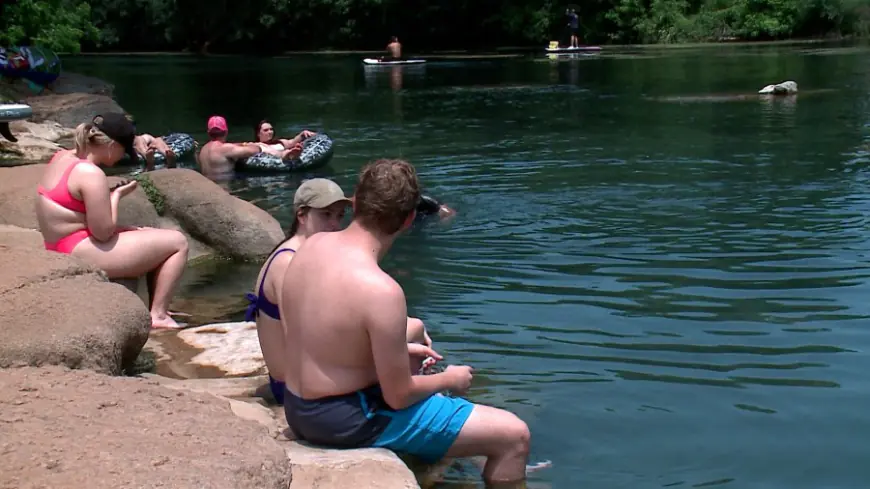San Marcos River flow drops to 'concerning' levels amid worsening drought conditions
The San Marcos River’s flow has lowered significantly due to ongoing drought conditions, according to the San Marcos River Foundation.

SAN MARCOS, Texas (KXAN) – The San Marcos River’s flow has lowered significantly due to ongoing drought conditions, according to the San Marcos River Foundation.
The river’s average flow is around 150 cubic feet per second. The San Marcos River Foundation shared a post-Monday saying the flow has dropped to around 80 cfs. Cubic feet per second is the unit of measurement used to describe the volume of water passing a point in a river in one second, according to USGS.
“We're at a concerning level,” said Virginia Parker, the Executive Director of the San Marcos River Foundation.
“The San Marcos River is fed by the Edwards Aquifer, which is a very large aquifer that provides drinking water to over 2 million people in Central Texas,” Parker continued. “There's a lot of crunchy grass out there, which means our aquifer is not getting recharged in the way it needs – not only for drinking water but also for rivers and streams in Central Texas.”
While our region got a decent amount of rain earlier in 2024, Parker said it was not significant enough to mitigate drought conditions.
Further, it’s been a dry start to the Fall season, creating a high risk for wildfires, and exacerbating drought conditions.
“I know that everyone at the beginning of the year and through the summer, felt like we were getting a lot of rain,” Parker said. “I think that's because we had about average rainfall for the year, but that's coming after years of drought.”
“I'm really concerned about the fact that we are so dry [leading into] the winter,” she continued. “I'm afraid that next summer's [water] levels will be worse than this summer, which was pretty rough.”
Parker said that there are some routines people can implement to try to reduce their water use during dry times. Things like taking shorter showers, turning off the faucet while brushing your teeth, and letting lawns of homes turn brown are all good ways to conserve water, Parker said.
“It is so frustrating to see sprinklers running at 4 p.m. – the hottest time of the day,” she said.
“We all see the change in the population in Central Texas. More people moving here means more straws in the ground needing water,” Parker continued. “We need to shift the way that we think about water use.”
What's Your Reaction?









































































































